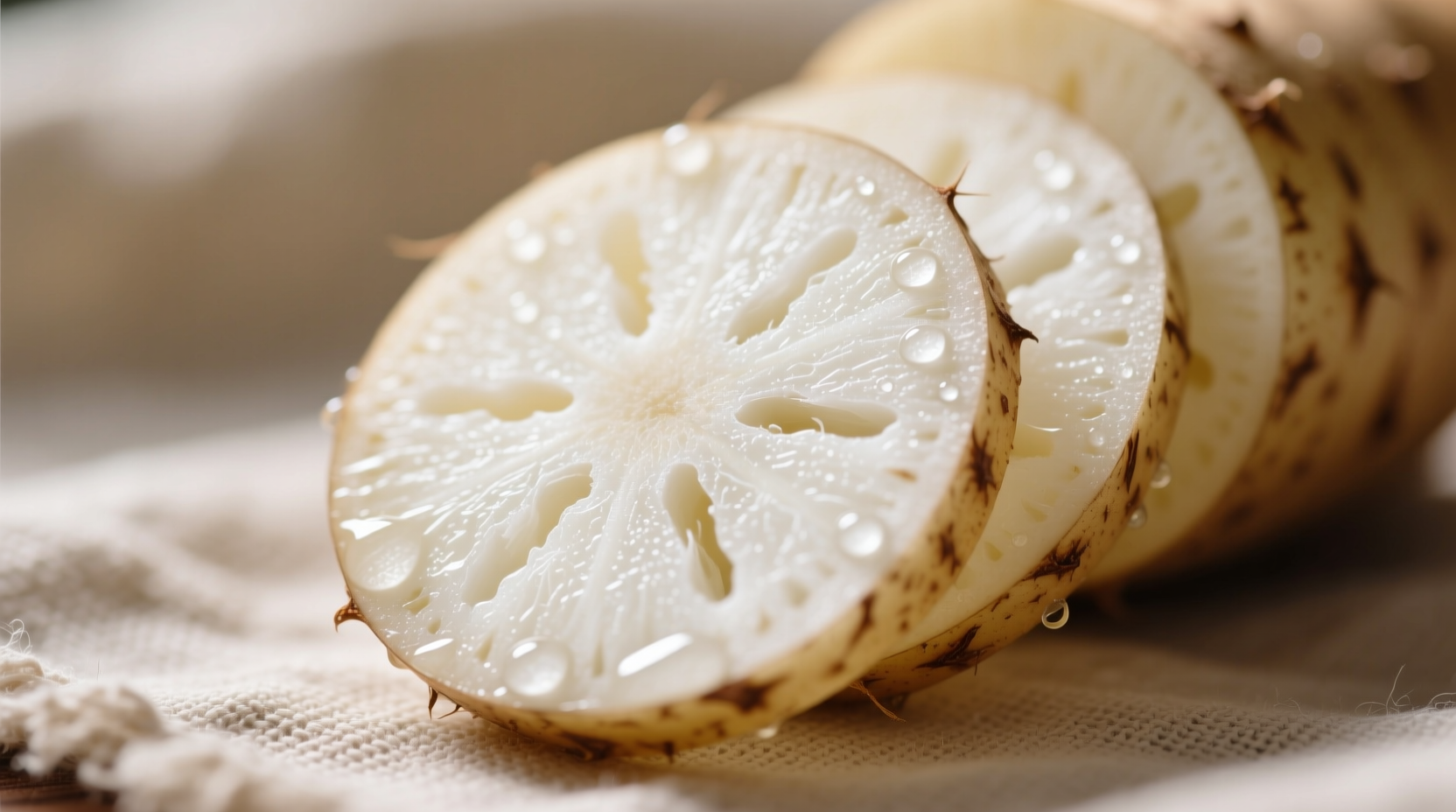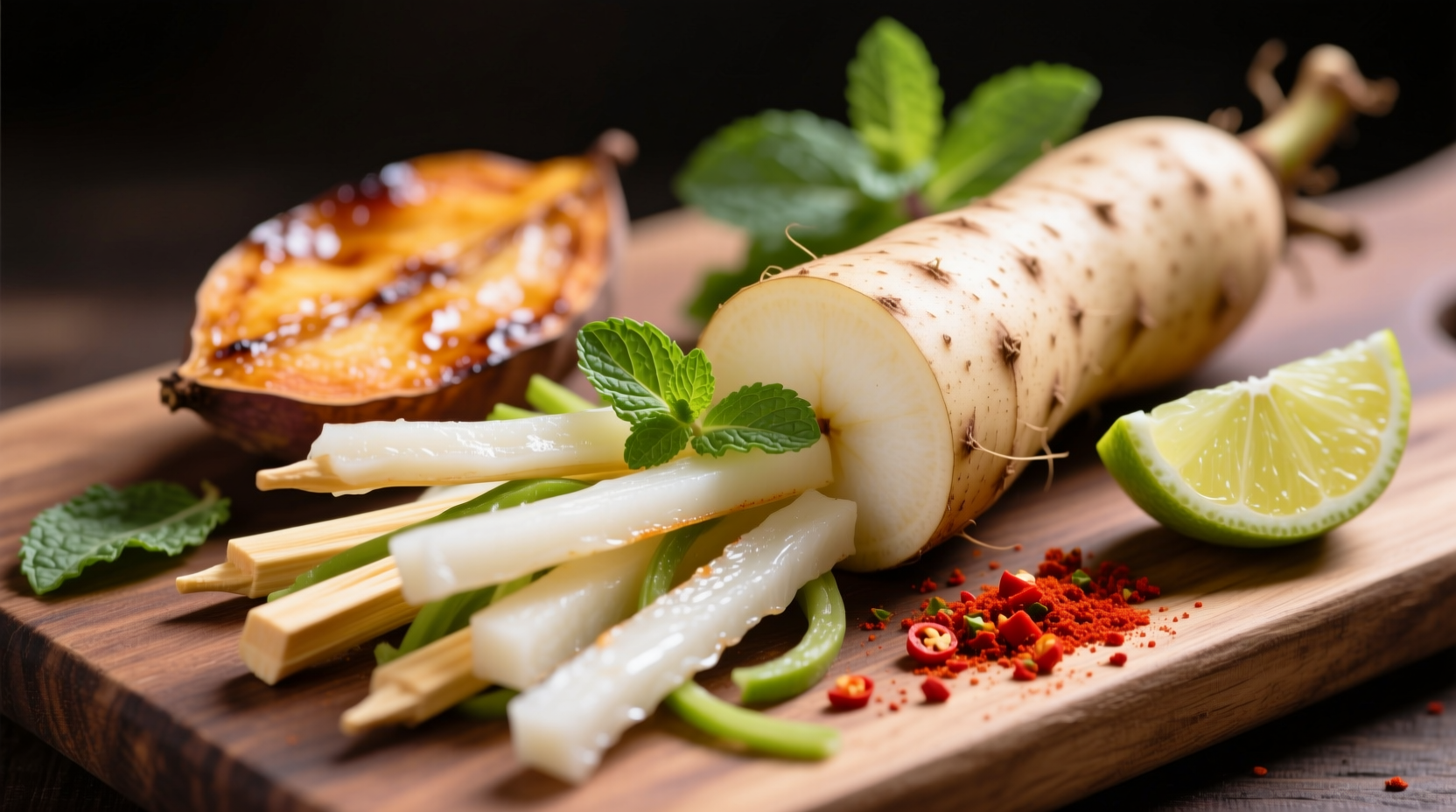Curious about incorporating this vibrant root vegetable into your meals but unsure what to expect? Understanding jicama's unique flavor profile is your first step toward unlocking its culinary potential. Whether you're exploring Latin American cuisine, seeking crunchy salad additions, or looking for low-calorie snack alternatives, knowing exactly what jicama tastes like helps you make informed cooking decisions that satisfy your palate.
The Sensory Experience of Jicama
When you bite into fresh jicama, you'll immediately notice its remarkable crunch—comparable to a water chestnut or raw potato but with more moisture. The flavor is subtly sweet with earthy undertones, yet remarkably neutral overall. This mildness allows it to absorb dressings and seasonings beautifully while maintaining its refreshing quality.
Unlike many root vegetables, jicama contains no starch, which explains its juicy, apple-like texture. Its high water content (85-90%) creates that signature crispness that holds up well in salads and slaws. The exterior skin is thick and brown, but the edible interior ranges from snow-white to pale yellow, with a clean, fresh aroma that hints at its mild flavor.

How Jicama Compares to Familiar Foods
Understanding what raw jicama tastes like becomes easier when comparing it to common produce. The table below breaks down these comparisons based on professional culinary evaluations from the James Beard Foundation's produce database:
| Comparison Food | Similarity to Jicama | Key Differences |
|---|---|---|
| Raw Potato | 75% | Potatoes have earthier flavor and starchier texture |
| Pear | 65% | Pears are sweeter with softer, grainier texture |
| Apple | 60% | Apples have stronger tartness and varied sweetness |
| Water Chestnut | 80% | Water chestnuts have more pronounced nuttiness |
Factors That Influence Jicama's Flavor Profile
Several elements affect how jicama tastes in different preparations, making it essential to understand these variables for optimal culinary results:
Ripeness and Maturity
Fresh jicama should feel heavy for its size with smooth, unblemished skin. As it matures, the flavor develops slightly more sweetness while maintaining its characteristic crispness. Overripe jicama becomes spongy and develops off-flavors—always avoid specimens with soft spots or wrinkled skin.
Preparation Methods
The way you prepare jicama significantly impacts its taste experience:
- Raw: Maximizes crisp texture and mild sweetness (ideal for salads, snacks, and ceviche)
- Steamed or Boiled: Softens texture while preserving mild flavor (good for soups and purees)
- Grilled or Roasted: Develops subtle caramelization and nuttier notes (excellent for side dishes)
- Pickled: Absorbs vinegar and spices while maintaining crunch (perfect for tacos and sandwiches)
According to USDA agricultural research, cooking jicama above 160°F triggers the Maillard reaction, creating those desirable nutty flavors while preserving its structural integrity better than most root vegetables.
Practical Applications for Home Cooks
Now that you understand what jicama tastes like, let's explore how to use this knowledge in your kitchen:
Perfect Pairings That Enhance Jicama's Flavor
Jicama's neutral profile makes it incredibly versatile. For authentic Latin American preparations, try these combinations:
- Mexican Street Style: Toss jicama sticks with lime juice, chili powder, and Tajín seasoning
- Tropical Twist: Combine with mango, cucumber, and mint for a refreshing salad
- Asian Fusion: Marinate in rice vinegar, sesame oil, and ginger for an unexpected crunch
Common Flavor Mistakes to Avoid
Many home cooks miss opportunities with jicama by making these errors:
- Using underripe jicama that's too starchy
- Over-seasoning and masking its delicate flavor
- Peeling too thickly and wasting edible portions
- Letting cut jicama sit too long before serving (loses crispness)
Professional chefs recommend cutting jicama just before serving to maintain maximum crunch. If prepping ahead, store in cold water with lemon juice to prevent oxidation while preserving texture—a technique validated by culinary research at the Culinary Institute of America.
Selecting and Storing for Optimal Flavor
To experience the best jicama taste profile, proper selection and storage are crucial:
- Selection: Choose firm specimens without bruises; larger jicamas tend to be sweeter
- Storage: Keep uncut jicama in a cool, dark place for up to 3 weeks
- Preparation Tip: Use a sharp knife to remove the tough skin—a vegetable peeler often struggles with its fibrous exterior
- Signs of Freshness: Moist, white interior with no brown spots or dry patches
When stored properly, jicama maintains its crisp texture and mild sweetness for weeks. Once cut, store in an airtight container with a damp paper towel in the refrigerator for up to 5 days. Avoid freezing raw jicama as it compromises the texture.
Nutritional Benefits That Complement Its Flavor
Jicama's mild taste makes it an excellent vehicle for healthy eating. With only 49 calories per 100g and 4.9g of dietary fiber, it provides substantial nutritional benefits without overwhelming flavors. Its high vitamin C content (20.2mg per 100g) enhances iron absorption from plant-based foods, making it particularly valuable in vegetarian diets.
The USDA FoodData Central confirms jicama contains inulin, a prebiotic fiber that supports gut health without affecting its neutral flavor profile. This makes it an ideal ingredient for those managing blood sugar levels who still want satisfying crunch in their meals.











 浙公网安备
33010002000092号
浙公网安备
33010002000092号 浙B2-20120091-4
浙B2-20120091-4